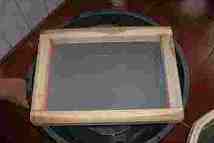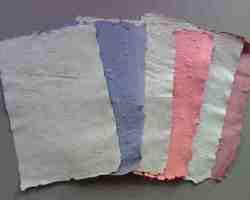A large variety of spices are grown and consumed in India. They are used for adding flavour to the food and also serve as appetizers and anti-oxidants. Spices are used either in whole form or by chopping into slices or pieces, or by grinding into powder or paste.
Some of the most commonly used varieties of spices in India are listed below.
Chillies: Chillies, known as the king of spices in Indian dishes, are used for making the food hot and spicy. Dried red chillies are used for preparing various curries and food dishes by frying them with a little oil along with mustard seeds and cumin for "tadka". Chilli powder is used in every single Indian household almost in every dish and is amongst the main ingredients used in preparation of Indian pickles.
Pepper: Black pepper is mostly used in powder form either individually or by mixing with other powders. There are two famous food stuffs in South India where it is used in raw form also. They are Bonda and Pongal.
Ginger: Ginger is used in raw form and dry form both. Dry ginger powder has many medicinal benefits too. Ginger is used either by slicing to tiny pieces and frying along with green chilli pieces in oil or by adding it as a paste in the preparations.
Coriander: Coriander seeds are powdered and used along with other spices to add flavour to food. Green coriander leaves are used as a top up flavour to many food dishes.
Turmeric: Turmeric is very important for its medical benefits. It is widely used in powder form in many preparations. It gives a magnificent colour to the dish and adds a different flavour to the food. Turmeric protects our body from allergies and diseases.
Mustard: Mustard seeds are amongst the chief Indian spices. Mustard powder is used for variety of pickle preparations. It is mainly used in "tadka" by mixing mustard seeds in oil in North India as well as South India.
Cumin: Cumin seeds are used along with chillies and mustard seeds for preparing various dishes by frying in oil. Cumin powder is also widely used in preparations such as raita (flavoured curd), chaas (butter milk) etc.
Tamarind: Tamarind is mostly used in South Indian dishes widely. Its juice is extracted and added in preparation of food dishes. It is useful as a preservative for making pickles and chutneys and is the main ingredient of Rasam, the main South Indian dish.
Cardamom: Cardamom is of two types. One is small, green coloured known as small elaichi used in sweet dishes and sweets.
Asafoetida: It is produced from the sap of a plant dried up and powdered. It is useful for digestion of food and gives a good taste to the food, apart from adding fluffiness to dough.
Besides above, there are many other varieties of spices used like curry leaves, onion and onion leaves, mint/pudina, fenugreek/methi, tej patta/bay leaf, tulsi/holy basil, garlic, cinnamon, cloves/lavang, ajwain/carom seed, fennel seed/sonf, black cumin, mango powder, cashew nut, almond, resin, saffron and chironji/charoli. Almost all of these spices are produced by spices manufacturers in India and exported to foreign countries.



